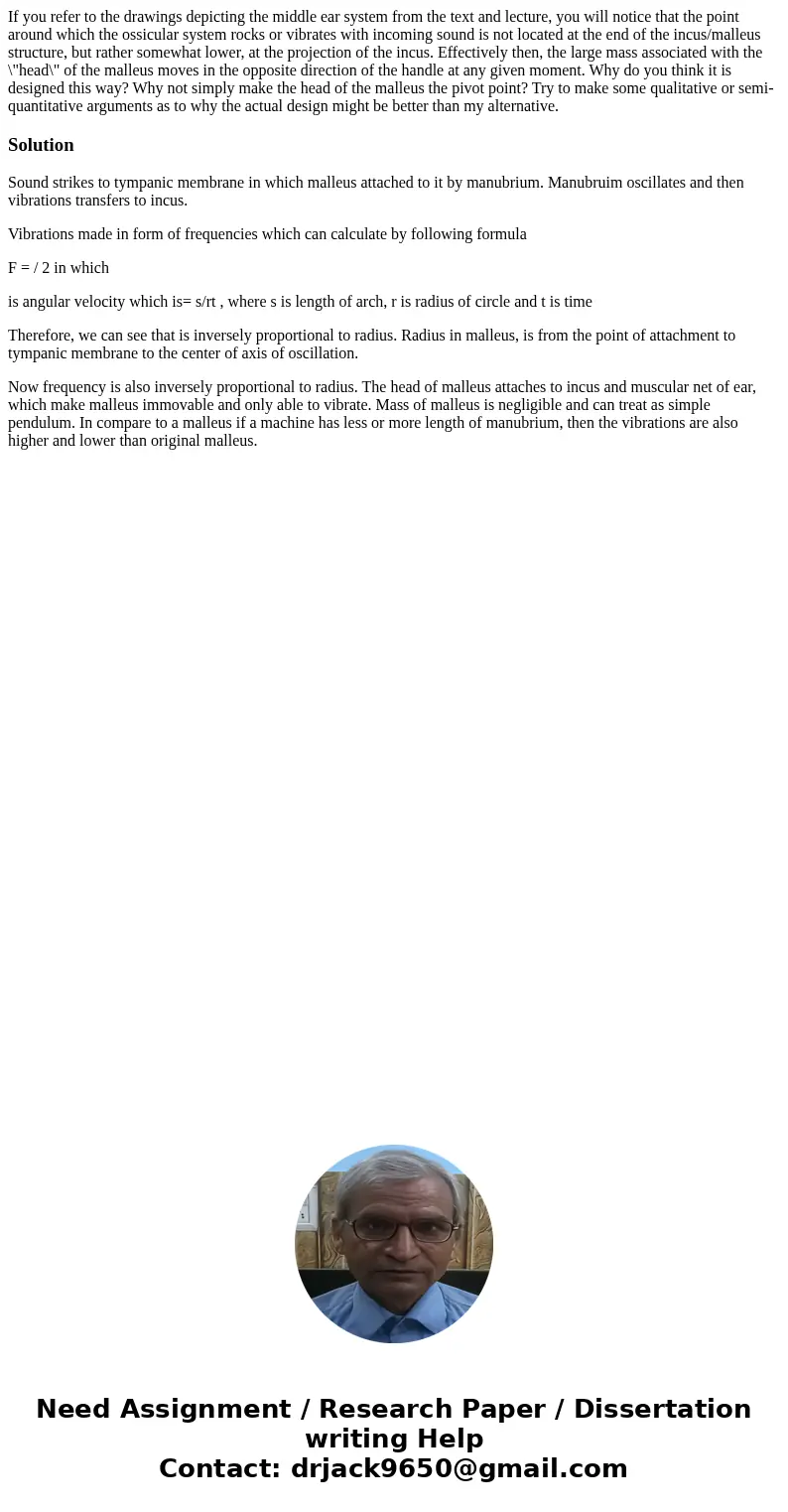If you refer to the drawings depicting the middle ear system
Solution
Sound strikes to tympanic membrane in which malleus attached to it by manubrium. Manubruim oscillates and then vibrations transfers to incus.
Vibrations made in form of frequencies which can calculate by following formula
F = / 2 in which
is angular velocity which is= s/rt , where s is length of arch, r is radius of circle and t is time
Therefore, we can see that is inversely proportional to radius. Radius in malleus, is from the point of attachment to tympanic membrane to the center of axis of oscillation.
Now frequency is also inversely proportional to radius. The head of malleus attaches to incus and muscular net of ear, which make malleus immovable and only able to vibrate. Mass of malleus is negligible and can treat as simple pendulum. In compare to a malleus if a machine has less or more length of manubrium, then the vibrations are also higher and lower than original malleus.

 Homework Sourse
Homework Sourse